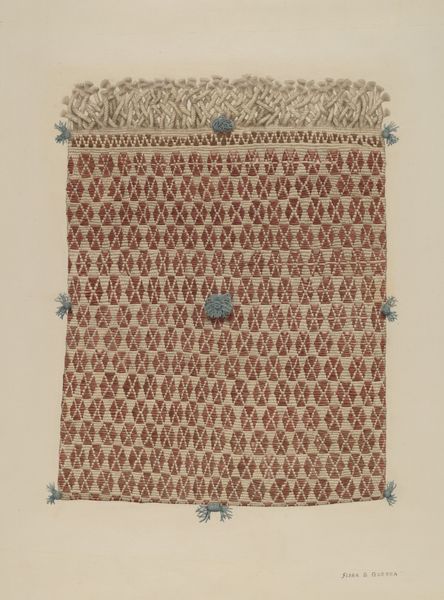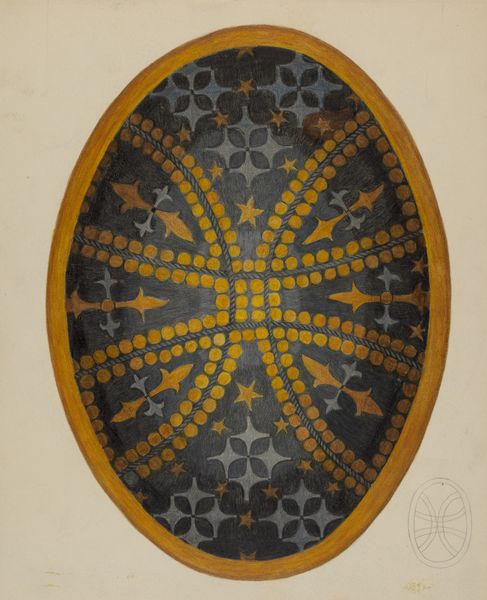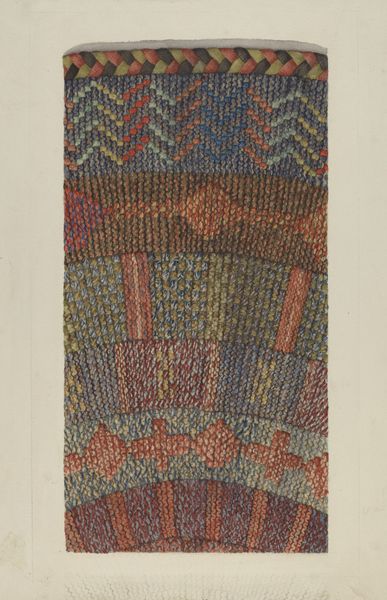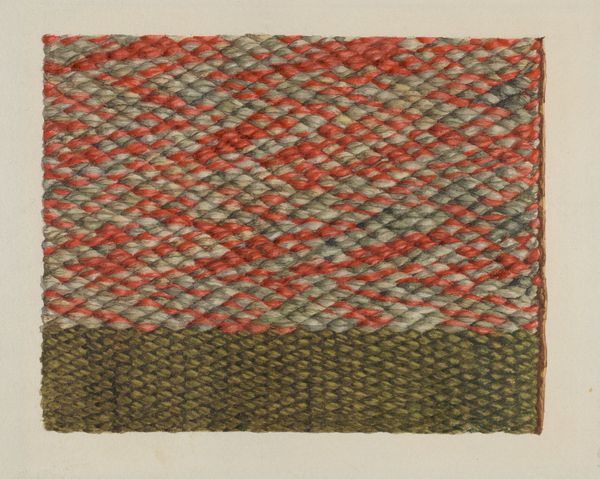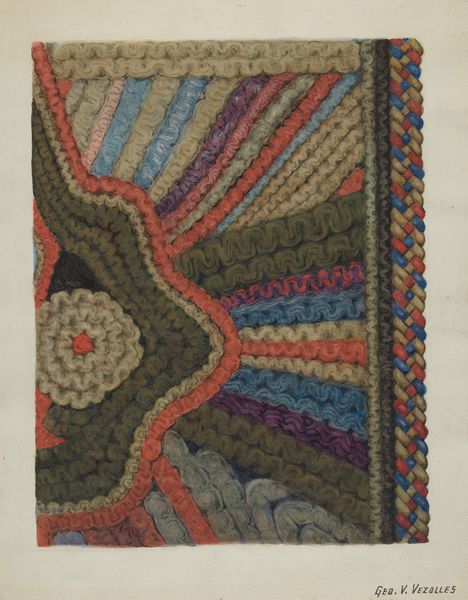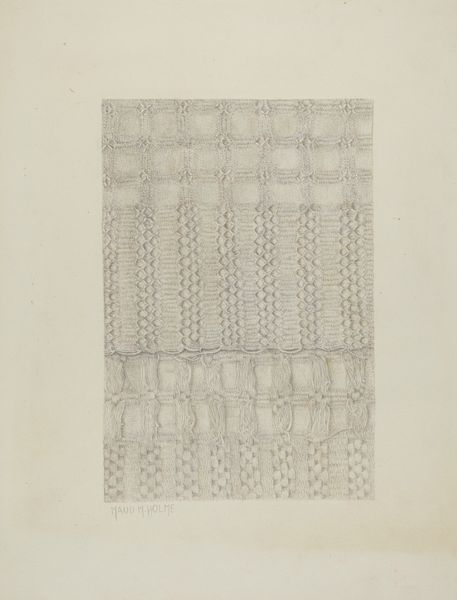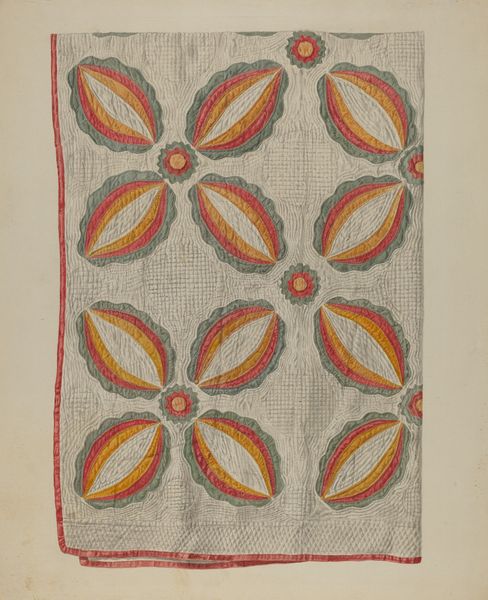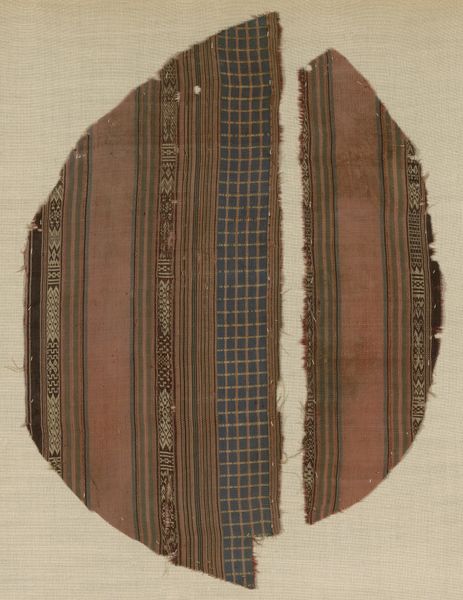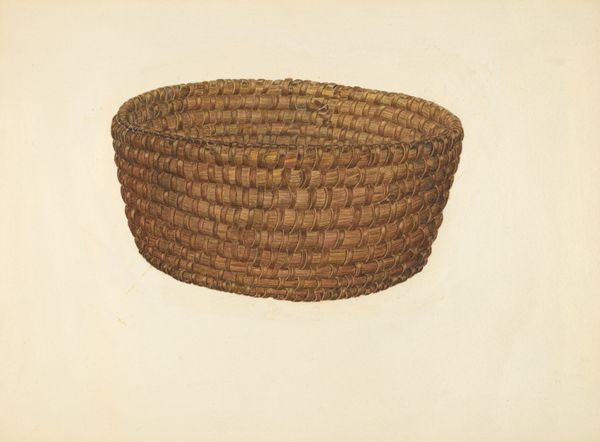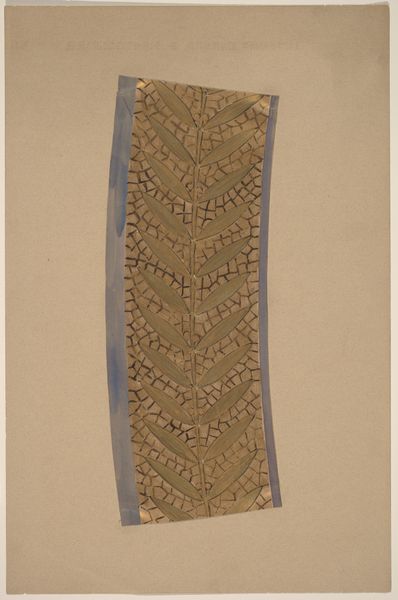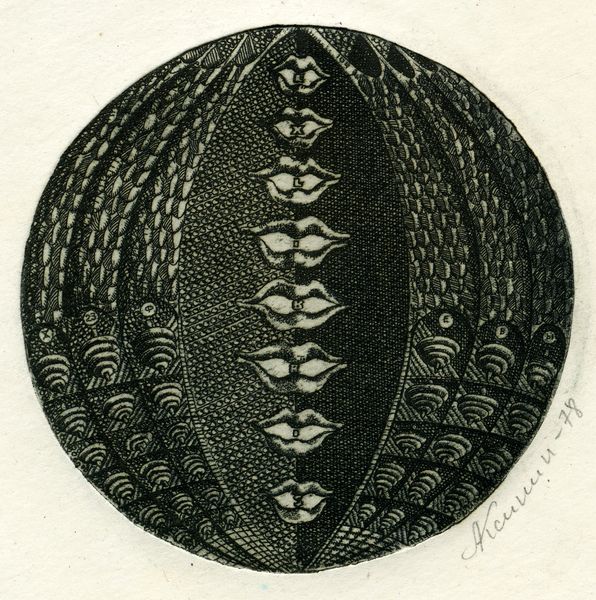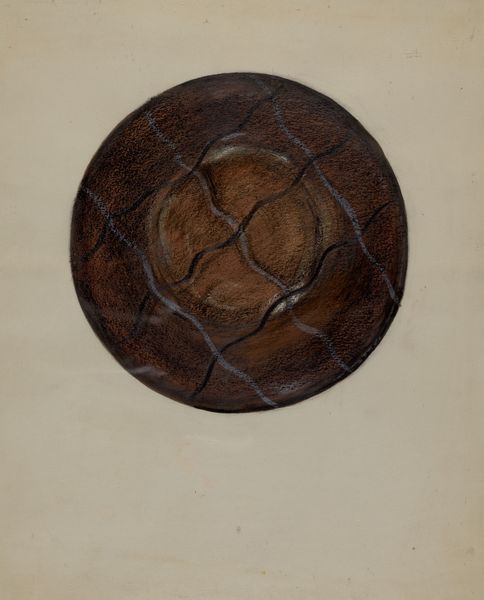
drawing
#
drawing
#
organic
#
oil painting
#
folk-art
#
decorative-art
Dimensions: overall: 48.3 x 35.9 cm (19 x 14 1/8 in.)
Copyright: National Gallery of Art: CC0 1.0
Curator: Looking at this compelling piece entitled “Shaker Rug,” crafted around 1941 by George V. Vezolles, I’m struck by how it manages to feel both familiar and remarkably distant. Editor: It gives me a sense of homespun, of modest living, the color scheme feels a bit muted but at the same time I see the incredible hand work in the pattern. It’s like looking into a simpler way of life. Curator: Indeed, its visual simplicity belies the intricate history woven into it. The Shakers, officially known as the United Society of Believers in Christ's Second Appearing, were a religious sect that prized simplicity, utility, and communal living. These values permeated every aspect of their lives, including their crafts. Editor: Absolutely, you see that ethos represented within it. Thinking about identity, gender, race and politics, who was involved in making textiles at that point in time and the history that goes along with those identities? How were domestic environments being created through textile artwork like this one? Curator: That is very well put, textiles like these became deeply associated with notions of domesticity and the role of women. The Shaker commitment to equality, while limited by the times, is interesting when seen through these everyday textiles, creating a unique narrative about American craft and ingenuity. Editor: You can really get lost thinking about the materiality as well as how they imagined the viewers, who do you think that the Vezolles was envisioning? Were these designs ever meant to be sold to people outside the community? Curator: While Shaker communities aimed for self-sufficiency, selling crafts like furniture, seeds, and textiles provided essential income. What I think Vezolles captures beautifully, is the translation of values through their visual aesthetic that was functional and beautiful, which appealed to outsiders but, also served an internal symbolic role. Editor: This definitely changes my impression of the piece. Initially, I simply thought this drawing represented an antiquated folk-art design, but understanding the social role in which it came to life transforms the emotional context. Curator: Precisely. That’s why contextualization, that relationship to social history, offers richer understanding of our collective narrative. Editor: Thanks for highlighting this artwork and it's intersectional ties within gender and socio-economic contexts. Curator: Thank you. This discussion highlights why even seemingly ordinary items, such as rugs, offer valuable insights into the intricacies of history, and are worthy of close attention.
Comments
No comments
Be the first to comment and join the conversation on the ultimate creative platform.
